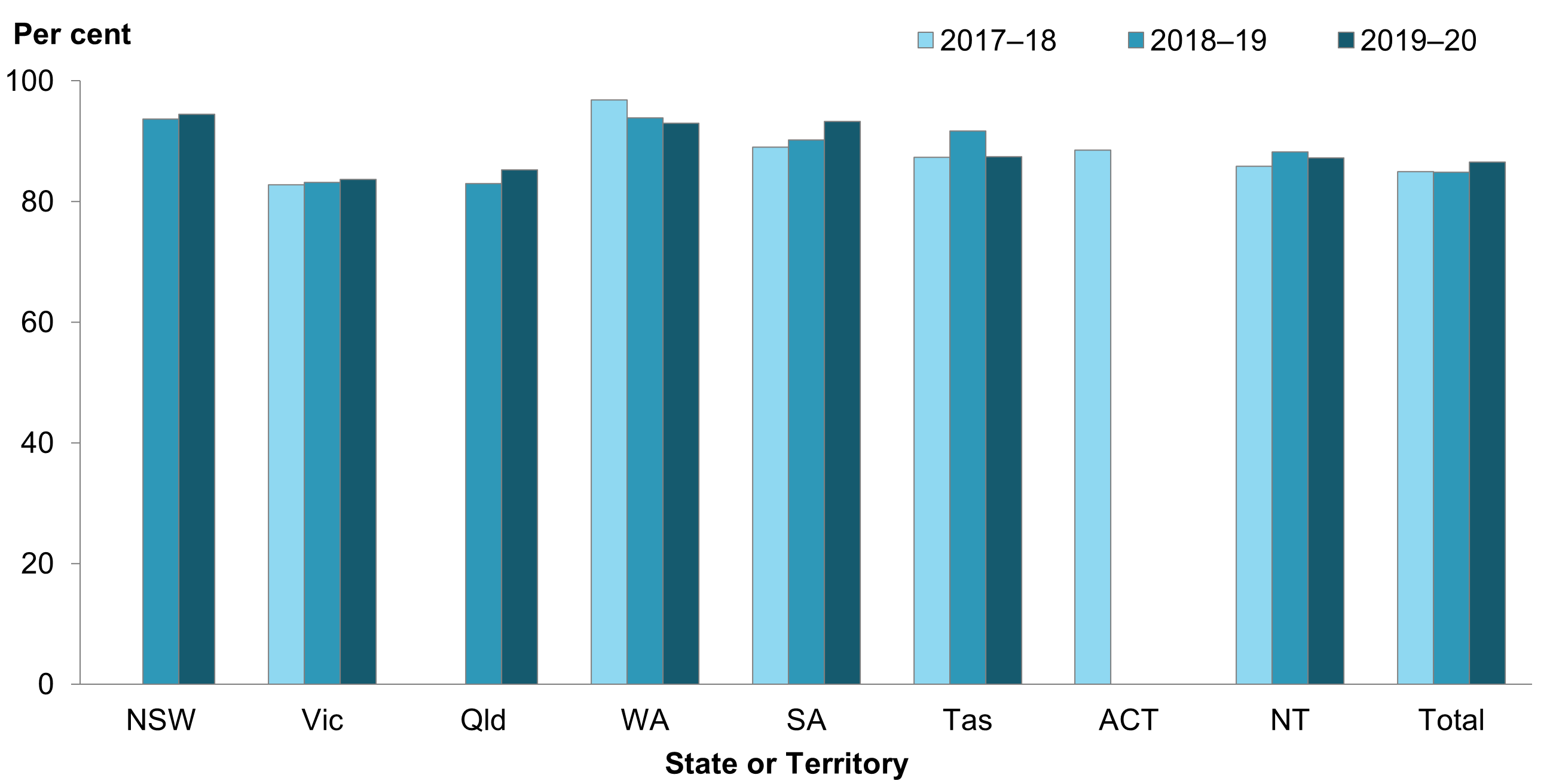Stability of permanency outcomes
Placement stability is measured by the extent to which children remain outside of out-of-home care following a permanency outcome.
Within 12 months of exiting out-of-home care
Indicator 1.6 measures the proportion of children aged 0–16 who exited out-of-home care to a permanency outcome in the reporting period and did not return to out-of-home care within 12 months. Data is reported for the previous financial year (2019–20) since the indicator covers the 12 months following the exit.
In 2019–20:
- 87% of the 6,500 children who exited out-of-home care to a permanency outcome did not return to out-of-home care within 12 months. This proportion was the same for the 1,900 Indigenous and 4,500 non-Indigenous children who exited out-of-home care to a permanency outcome (Table S1.6).
- The proportion of children who did not return to out-of-home care within 12 months ranged from 84% in Victoria to 94% in New South Wales (Figure 2).
Figure 2: Children aged 0–16 who exited out-of-home care to a permanency outcome and did not return to out-of-home care within 12 months, by state and territory, 2017–18 to 2019–20 (per cent) (Indicator 1.6)

Notes
- Data for New South Wales and Queensland are not available for 2017–18.
- Tasmania and the Australian Capital Territory have requested suppression of numbers below 5 (excluding 0) and AIHW has applied additional suppression.
Chart: AIHW. Source: AIHW Child Protection Collection 2021 Table S1.6
In Indicators 1.6a–c this data is separated into the 3 types of permanency outcome: reunification, third-party responsibility order and adoption.
Note that Indicator 1.6a is the same as the Aboriginal and Torres Strait Islander Child Placement Principle Indicator 2.4 (AIHW 2022).
In 2019–20:
- 84% of the 5,200 children aged 0–16 who were reunified with family during the reporting period did not return to out-of-home care within 12 months. This proportion was the same for the 1,500 Indigenous and 3,600 non-Indigenous children who were reunified with family during the reporting period (Table S1.6a).
- The proportion of children who did not return to out-of-home care within 12 months of reunification ranged from 82% in Victoria and Queensland to 92% in Western Australia (Table S1.6a).
- All but 4 of the 1,100 children (99.6%) aged 0–16 who exited to third-party parental responsibility order did not return to out-of-home care within 12 months (Table S1.6b).
- All of the 160 children who exited to adoption did not return to out-of-home care within 12 months (Table S1.6c).
References
AIHW (Australian Institute of Health and Welfare) (2022) The Aboriginal and Torres Strait Islander Child Placement Principle indicators, AIHW, Australian Government, accessed 26 August 2022.


